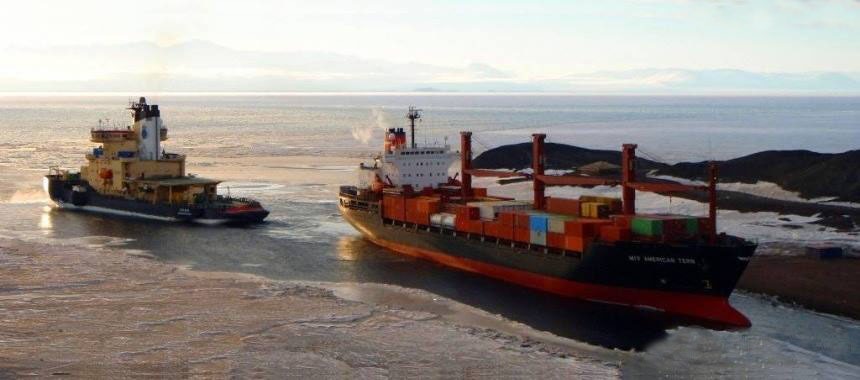Prospects of sea cargo transportation along the Northern Sea Route

In 2011, sea cargo transportation along the Northern Sea Route, the shipping line between the Atlantic and the Pacific Ocean along the Russian coast of the Arctic Ocean, can reach 3 million tons, which will be a record cargo turnover since the late 1980s.
At the end of the 1980s, the volume of cargo transportations along the Northern Sea Route amounted to 7 million tons, but in the 1990s the freight turnover decreased almost fivefold and amounted to about 1.5 million tons. Significantly later, sea freight traffic began to grow and in 2010 reached 2.3 million tons. The growth trend is explained by several factors.
At first, since 2009, foreign shipping companies have become interested in the Northern Sea Route. The last year, this route regularly runs three foreign transport vessels, among which the oil tanker Affinity.
Secondly, interest in the Northern Sea Route causes the distance of this route, because it is 1/3 shorter than the traditional shipping route through the Suez Canal.
Thirdly, experts predict that warming in the northern latitudes of the Arctic region will continue for at least 10 years, so the Northern Sea Route will be suitable for navigation of sea vessels with different displacement.
Fourthly, development of oil and gas fields on the Yamal Peninsula (Western Siberia), after 2015 will significantly increase freight turnover compared to this year. In addition, the construction of a terminal for the processing of tankers-gas carriers is planned in the Ob Bay. It will consist of several units,each of which will have a production capacity of about 5 million tons per year.
In other words, the Northern Sea Route has good prospects. Every year, the number of foreign cargo ships can increase three-fold, as many foreign shipping companies are interested in transporting goods from Asia.
- Comments
 en
en ru
ru uk
uk




